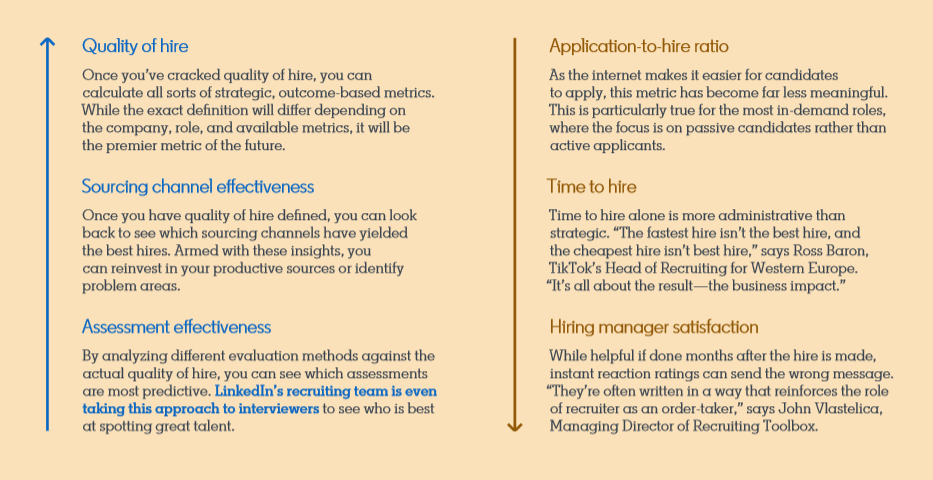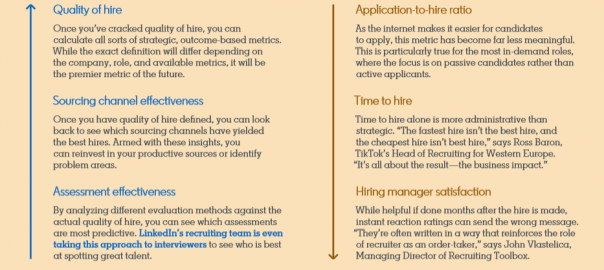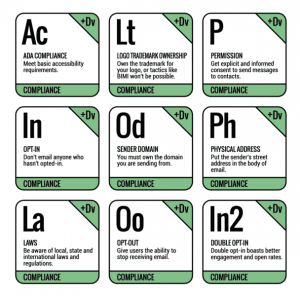What are your most important metrics for your recruiting and hiring process? If you have an immediate answer you are most likely on the right path to staying ahead of your competition in the war for talent. If you do not have an answer or are thinking, “How can I start using metrics to evaluate my process?” then you have some work to do.
We don’t have to explain why metrics are important. If you called your sales, finance or operations leaders right now and asked them what their most important metrics are, they would be able to rattle them off immediately (close-ratio, order to cash, DSO, average job completion time, etc.). These metrics are kept to ensure that those departments are successful. The main reason we see metrics absent from the hiring process is that there is not a standard process in place. Most approach hiring reactively just hoping that the right candidate happens upon their recycled job description.
If you have metrics then you have the ability to accurately evaluate your processes to see what is and isn’t working. The time, energy and resources companies spend on finding the right people to join their organization can be staggering. The only way to minimize these investments is by doing an evaluation of your process. LinkedIn has identified the metrics that will matter more as recruiting evolves as Quality of Hire, Sourcing Channel Effectiveness, and Assessment Effectiveness.

From LinkedIn Talent Solutions e-Book; The Future of Recruiting
Quality of Hire:
LinkedIn selected this as the “premier recruiting metric of the future” because this is what matters to business owners. After all the investments made, are you hiring the right people who are making a positive impact on the organization? The data points for this metric can consist of performance feedback, longevity in the role, promotability, etc.
Sourcing Channel Effectiveness:
This is second on the list because you can’t have quality hires without a pipeline of quality candidates. Right now, you could have an open position while the right candidate (who would very much like to join your organization) could be sitting in an office down the street. However, how do they know you are looking? What is the right answer? This is hard to say but it can be anything from Linkedin Recruiter, 3rd Party Recruiting support, Job Boards, Job Fairs, etc. Be sure to understand that your sourcing plan needs to be strategic, not just “let’s throw something at the wall and see what sticks.” Evaluate, set targets and be confident that each sourcing channel you are engaging with improves your brand and brings quality candidates.
Assessment Effectiveness:
Once you have the pipeline of talent, you need to be able to efficiently and effectively screen for who can do the job. Neglecting this area can be devastating to your business, as cutting corners will lead to the bad hires, over screening can lead to disgruntled candidates or worse – you declining the right applicant who was the best fit in the market for your open position.
Once you have selected what metrics make the most sense for your business you need to confirm that you have a standardized process for hiring. This process needs to be followed by everyone involved in recruiting and hiring. If the process is not standardized you can’t begin to use metrics to make informed business decisions. Over the next 6-12 months, you want to be diligent in evaluating how your process is working. If the data points uncover certain bottlenecks or points of failure in the process make those changes immediately. This way you can start evaluating the changes in the process for their effectiveness.
In the beginning, you will need to experiment. However, once you have a hiring process framework and metrics to evaluate your success you will begin to see results. The end goal is to efficiently build your candidate pipeline, company brand in the job search marketplace, and bring the right people into your organization.
Business & Finance Articles on Business 2 Community
(62)
Report Post







